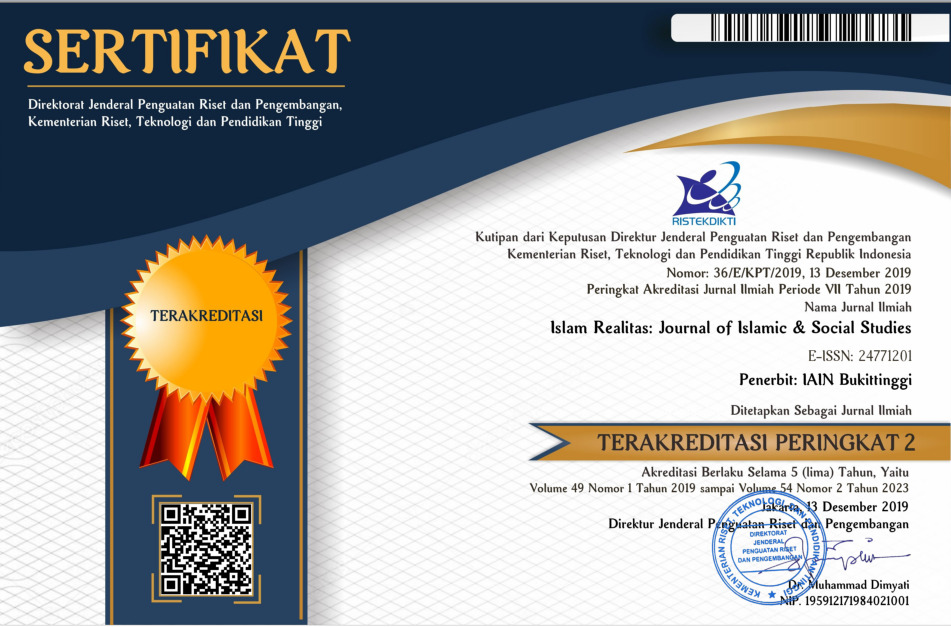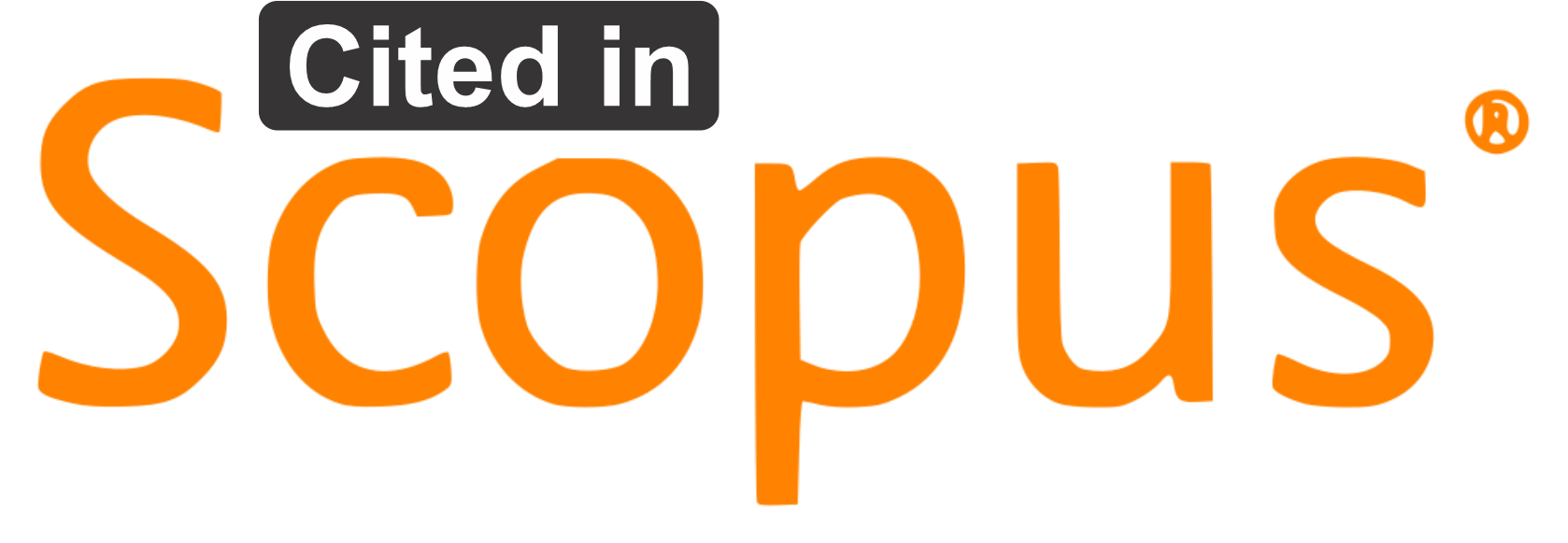Accumulate Content About LGBTQ+ Towards Attitude of Muslims on Instagram
Downloads
This study examines the attitude of Instagram followers @taulebih.id towards LGBTQ+ content on the Instagram provides information about sexual education based on an Islamic point of view. One of them is the Instagram account @taulebih.id which often provides information about LGBTQ+ to give a complete picture of the LGBTQ+ community from an Islamic viewpoint. This study uses a quantitative method with an explanatory approach. The information integration theory states accumulate information has latent power and can influence individuals to have certain attitudes. Information Integration Theory focuses on how individuals collect and organize information about accumulate information to act positively or negatively towards attitude objects. Researchers used questionnaire on Instagram with 100 respondents. The results of hypothesis testing using the t-test show that the influence of LGBTQ+ content @taulebih.id with the valance and weight dimensions significantly affects followers' attitudes. The results obtained by Ha are accepted, which means that there is a significant influence on the attitude of followers or followers who agree with the statements in the @taulebih.id account. This can be proven from the data results of t count 14.789 which is greater than t table, namely 1.292 so that it can be concluded that the hypothesis is accepted. Â
Books
Atmoko, Bambang Dwi, Instagram Handbook Tips Fotografi Ponsel (Jakarta: Mediakita, 2012)
Azwar, Saifuddin, Sikap Manusia: Teori dan Pengukurannya (Yogyakarta: Pustaka Pelajar, 2015)
Littlejohn, Stephen W., A. Foss Karen, and John G Oetzel, Theories of Human Communication (Waveland Press, Inc, 2017) <https://books.google.co.id/books?id=yJ32DQAAQBAJ&printsec=frontcover&hl=id&source=gbs_book_other_versions_r&cad=2#v=onepage&q&f=false>
Mcquail, Denis, Teori Komunikasi Massa (Jakarta: Salemba Humanika, 2011)
Nasrullah, Rulli, Teori dan Riset Media Siber (Cybermedia) (Jakarta: Prenadamedia Group, 2014) <https://books.google.co.id/books?id=J-VNDwAAQBAJ&printsec=copyright&redir_esc=y#v=onepage&q&f=false>
Noviansyah, Eka, Aplikasi Website Museum Nasional Menggunakan Macromedia Dreamweaver MX (Jakarta: STIK, 2008)
Nuryanto, Hery, Sejarah Perkembangan Teknologi Informasi dan Komunikasi (Jakarta: PT Balai Pustaka (Persero), 2012)
Sarwono, Sarlito W., Pengantar Psikologi Umum, 9th edn (Jakarta: Rajawali Press, 2018)
Sugiyono, Metode Penelitian Kuantitatif, Kualitatif, dan Tindakan (Bandung: Alfabeta, 2014)
Journals
Aryanti, Yosi, ‘Fenomena Lesbian, Gay, Biseksual dan Transgender (Solusi dan Upaya Pencegahannya)’, Humanisma: Journal of Gender StudiesJurnal of Gender Studies, 03.02 (2019), 154–69
David, E. R. (Eribka), M. (Mariam) Sondakh, and S. (Stefi) Harilama, ‘Pengaruh Konten Vlog dalam Youtube Terhadap Pembentukan Sikap Mahasiswa Ilmu Komunikasi Fakultas Ilmu Sosial dan Politik Universitas Sam Ratulangi’, Acta Diurna, 6.1 (2017), 93363 <https://www.neliti.com/publications/93363/pengaruh-konten-vlog-dalam-youtube-terhadap-pembentukan-sikap-mahasiswa-ilmu-kom>
Faludi, Cristina, and Cornelia Rada, ‘Gender Differences in Sexual and Reproductive Health Education in the Family : A Mixed Methods Study on Romanian Young People’, BMC Public Health, 19.1 (2019), 1–14 <https://doi.org/10.1186/s12889-019-7321-0>
Haridi, Noor Hafizah bt Mohd, and Norsaleha bt. Mohd Salleh, ‘Kumpulan Lesbian, Gay, Biseksual dan Transgender (LGBT) Ancaman Terhadap Keamanan dan Keharmonian Beragama di Malaysia’, Islam Realitas: Journal of Islamic & Social Studies, 2.2 (2016), 211–18
Havifi, Ilham, and Oktri Permata Lani, ‘Konten LGBT Pada Instagram dan Persepsi Kelompok Usia Muda Kota Bukittinggi dalam Berprilaku’, Jurnal Ranah Komunikasi, 1.1 (2017), 1–10
Kusumastuti, Retno Dyah, and Nurul Amanah, ‘Efektivitas Pemanfaatan Media Aplikasi dalam Meningkatkan Brand Awareness Konsumen ( Studi Kasus Aplikasi Go-Jek di Smartphone )’, Bina Widya, 26.3, 113–27
Leoni, Judy Djoko Wahjono Tjahjo, and Felicia Goenawan, ‘Sikap Followers Terhadap Content Marketing di Instagram @Secondatebeauty’, Jurnal E-Komunikasi, 9.2 (2021), 9
Leyrer-jackson, Jonna M, and Ashley K Wilson, ‘The Associations Between Social-Media Use and Academic Performance Among Undergraduate Students in Biology’, Journal of Biological Education, March, 2017, 1–10 https://doi.org/10.1080/00219266.2017.1307246
Nwodu, G B, Chinwe Beatrice Ezeoke, and Nonye Benedeth Ezeaka, ‘Audience Perception of Social Media Messages on Security Challenges in the South East, Nigeria: Implication for Audience Gate Keeping’, World Journal of Innovative Research, 11.2 (2021), 57–69
Prastiwi, Elis, ‘The Stereotypes of LGBT on Republika Online News Article’, Jurnal Etnolingual, 5.1 (2022), 48–70 <https://doi.org/10.20473/etno.v4i2.33943>
Salma, Fadly Yunandri, and Yecki Bus, ‘Kerapuhan dan Keruntuhan Keluarga Studi Kasus Putusan Pengadilan Agama Padang Tentang Suami Berperilaku Biseksual’, Humanisma: Journal of Gender Studies, 04.01 (2020), 95–107
Online Resources
Yakin, Syamsul, ‘Khutbah Jumat: LGBT dalam Perspektif Teologis dan Historis’, JurnalDepok, 2020 <https://www.jurnaldepok.id/2020/01/17/khutbah-jumat-lgbt-dalam-perspektif-teologis-dan-historis/>
Authors who publish with this journal agree to the following terms:
- Authors retain copyright and grant the journal right of first publication with the work simultaneously licensed under a Creative Commons Attribution License that allows others to share the work with an acknowledgment of the work's authorship and initial publication in this journal.
- Authors are able to enter into separate, additional contractual arrangements for the non-exclusive distribution of the journal's published version of the work (e.g., post it to an institutional repository or publish it in a book), with an acknowledgment of its initial publication in this journal.
- Authors are permitted and encouraged to post their work online (e.g., in institutional repositories or on their website) prior to and during the submission process, as it can lead to productive exchanges, as well as earlier and greater citation of published work (See The Effect of Open Access).









